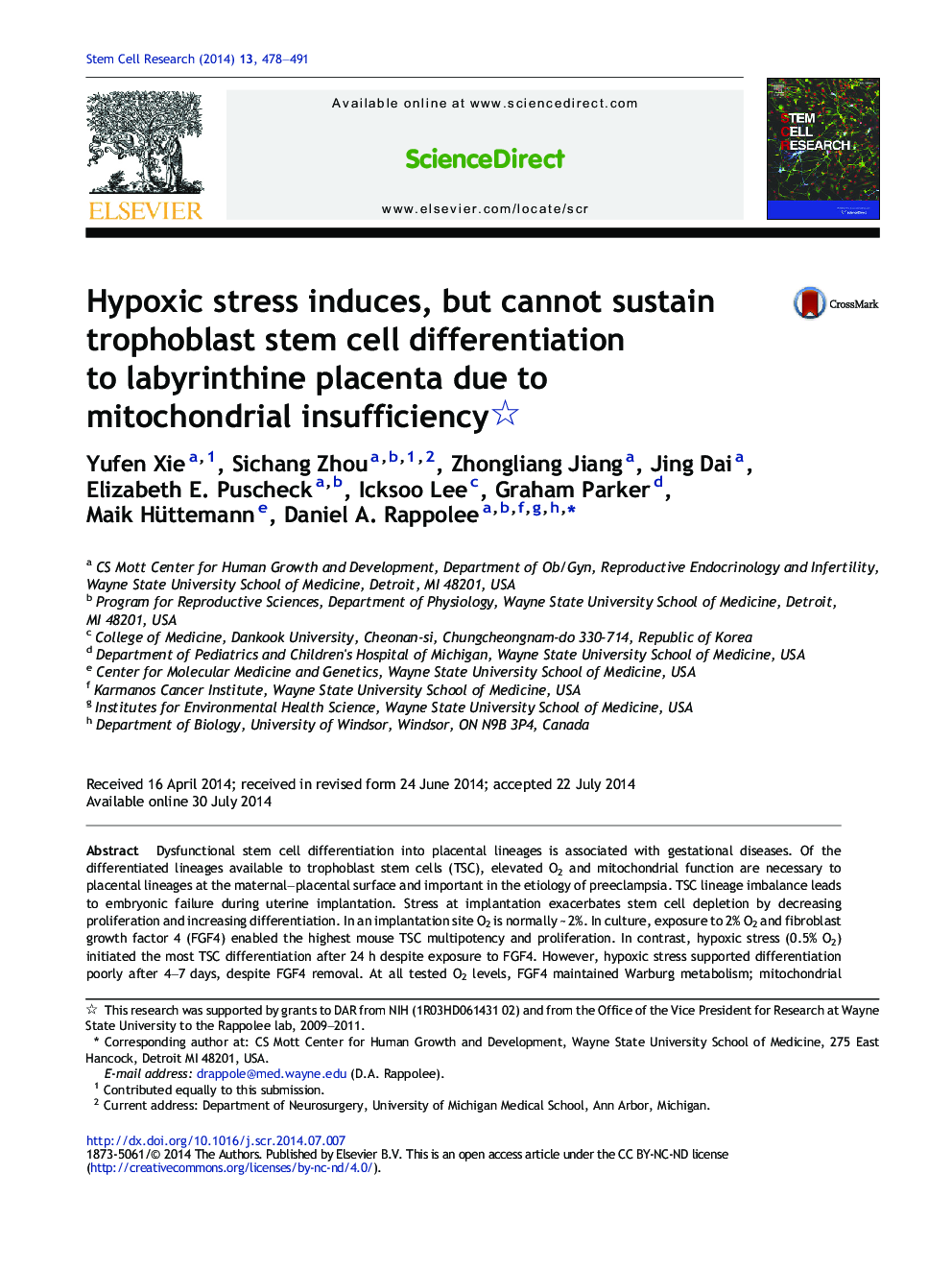| Article ID | Journal | Published Year | Pages | File Type |
|---|---|---|---|---|
| 2094250 | Stem Cell Research | 2014 | 14 Pages |
•Upon O2 stress SAPK mediates increase in first and decrease in later lineages.•Hypoxia induces but can’t sustain differentiation, due to mitochondrial insufficiency.•FGF4 decreases mitochondrial charge and increases glycolysis at all O2 levels.•Only at O2 > 2% can the enzyme mediating mitochondrial charge enable differentiation.•OxPhos agonists and antagonists show that 2 lineages require mitochondrial activity.
Dysfunctional stem cell differentiation into placental lineages is associated with gestational diseases. Of the differentiated lineages available to trophoblast stem cells (TSC), elevated O2 and mitochondrial function are necessary to placental lineages at the maternal–placental surface and important in the etiology of preeclampsia. TSC lineage imbalance leads to embryonic failure during uterine implantation. Stress at implantation exacerbates stem cell depletion by decreasing proliferation and increasing differentiation. In an implantation site O2 is normally ~ 2%. In culture, exposure to 2% O2 and fibroblast growth factor 4 (FGF4) enabled the highest mouse TSC multipotency and proliferation. In contrast, hypoxic stress (0.5% O2) initiated the most TSC differentiation after 24 h despite exposure to FGF4. However, hypoxic stress supported differentiation poorly after 4–7 days, despite FGF4 removal. At all tested O2 levels, FGF4 maintained Warburg metabolism; mitochondrial inactivity and aerobic glycolysis. However, hypoxic stress suppressed mitochondrial membrane potential and maintained low mitochondrial cytochrome c oxidase (oxidative phosphorylation/OxPhos), and high pyruvate kinase M2 (glycolysis) despite FGF4 removal. Inhibiting OxPhos inhibited optimum differentiation at 20% O2. Moreover, adding differentiation-inducing hyperosmolar stress failed to induce differentiation during hypoxia. Thus, differentiation depended on OxPhos at 20% O2; hypoxic and hyperosmolar stresses did not induce differentiation at 0.5% O2. Hypoxia-limited differentiation and mitochondrial inhibition and activation suggest that differentiation into two lineages of the labyrinthine placenta requires O2 > 0.5–2% and mitochondrial function. Stress-activated protein kinase increases an early lineage and suppresses later lineages in proportion to the deviation from optimal O2 for multipotency, thus it is the first enzyme reported to prioritize differentiation.
